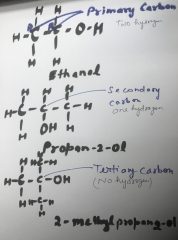TOK connections in Chemical Bonding: Chemical bonding and Theory of Knowledge (TOK) can be mutually beneficial; the principles behind chemical bonds can provide insight into how we learn and view the world, while TOK’s critical and reflective thinking practices can deepen our understanding of chemical bonding.
Analyze Progress in Chemical Bonding with TOK.
As we progress through the study of chemical bonding, TOK can help us to better analyze our learning and achieve a deeper understanding of the underlying principles. Through TOK’s critical thinking practices, we can analyze phenomena and ask questions about why elements form certain bonds and how environmental variables may play a role in this process. By reflecting on our own experiences and questioning assumptions, we can confront any gaps in understanding and build more informed narratives about chemical bonding.
Discern the Changing Nature of Concepts with TOK.
An important application of TOK to the learning and understanding of chemical bonding is the ability to discern the changing nature of concepts throughout history as new knowledge is gained. As science evolves, we continue to gain a deeper appreciation for how atomic structures are affected by forces like gravity and electric fields, which can in turn influence the reactivity of elements. By researching evolving concepts and theories, we can use TOK to develop research-based evidence about why molecules form specific bonds under certain conditions.
Encourage Exploration of Different Perspectives with TOK.
TOK can also be used to help develop an appreciation for the different ways of looking at the same concept, i.e. how chemists from various backgrounds may interpret information differently, and how this could lead to alternative explanations and hypotheses about certain phenomenon. Exploring these perspectives can give us insight into a wider range of approaches we can potentially use when faced with related problems in our studies. Ultimately, it provides us with a more comprehensive understanding of chemical bonding – and any other topics for that matter – which enables us to better apply such knowledge both in and outside of the context of our studies.
Highlight Evidence for Chemical Bonding With TOK.
Within the TOK framework, we can further explore our relationship with evidence in regards to chemical bonding. This includes understanding how different scientific theories use evidence to explain theoretical concepts, such as the electrons-in-shell structure for diatomic molecules, or the valence bond theory for other types of molecular interactions. We can also analyze how data and experimental results are used to explain ideas, like the effectiveness of specific reagents in changing molecular properties and behavior. In doing so, we gain a better appreciation into how valid scientific conclusions on chemical bonding are reached and supported.
Bring Reason and Evidence Together to Explain Chemical Bondation with TOK.
With TOK, we can bring reason and evidence together to explain chemical bond formation. Our holistic understanding of the role of evidence in chemistry can be strengthened through analyzing data, hypotheses and theories critical reasons, potential implications and the ethics behind them all. This allows us to understand chemical bond formation more deeply. It also helps us identify gaps in our reasoning and use the scientific process to answer fundamental questions about how chemical reactions occur.
Please comment and share the “TOK connections in Chemical Bonding post.”

